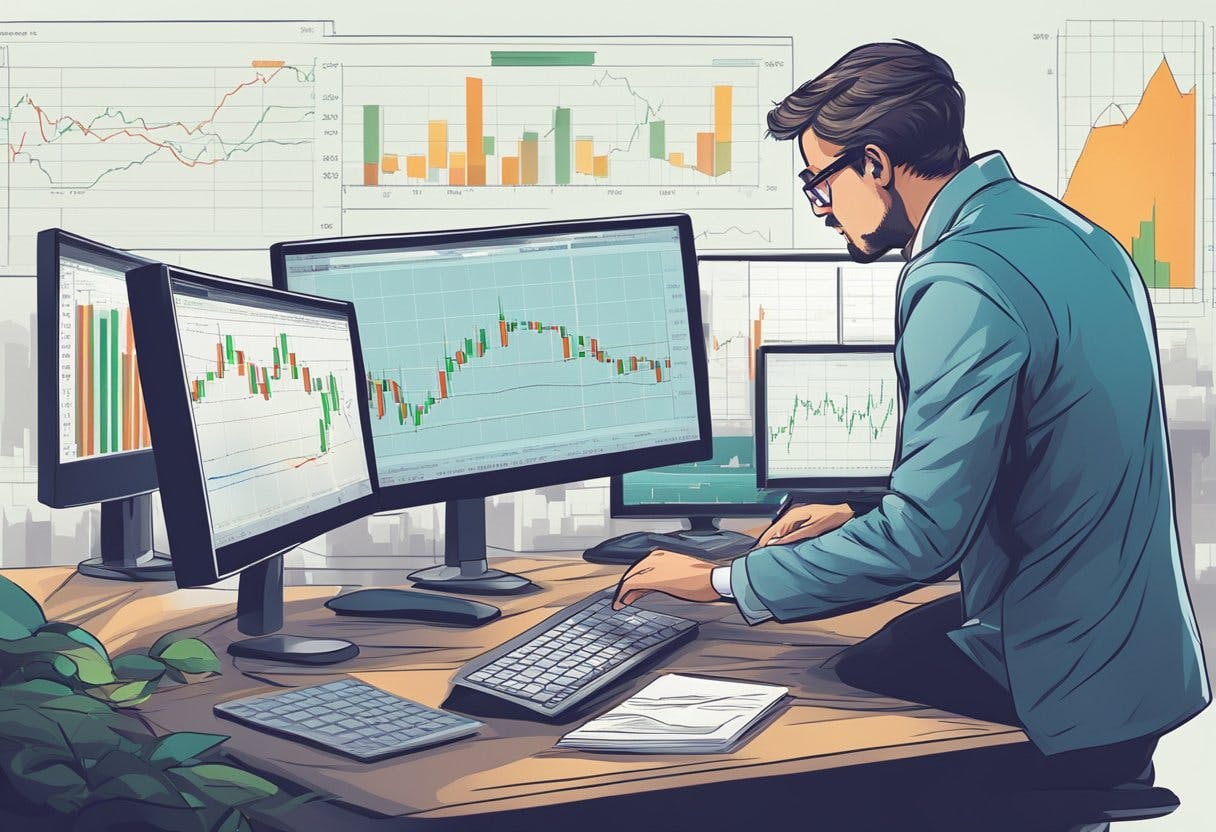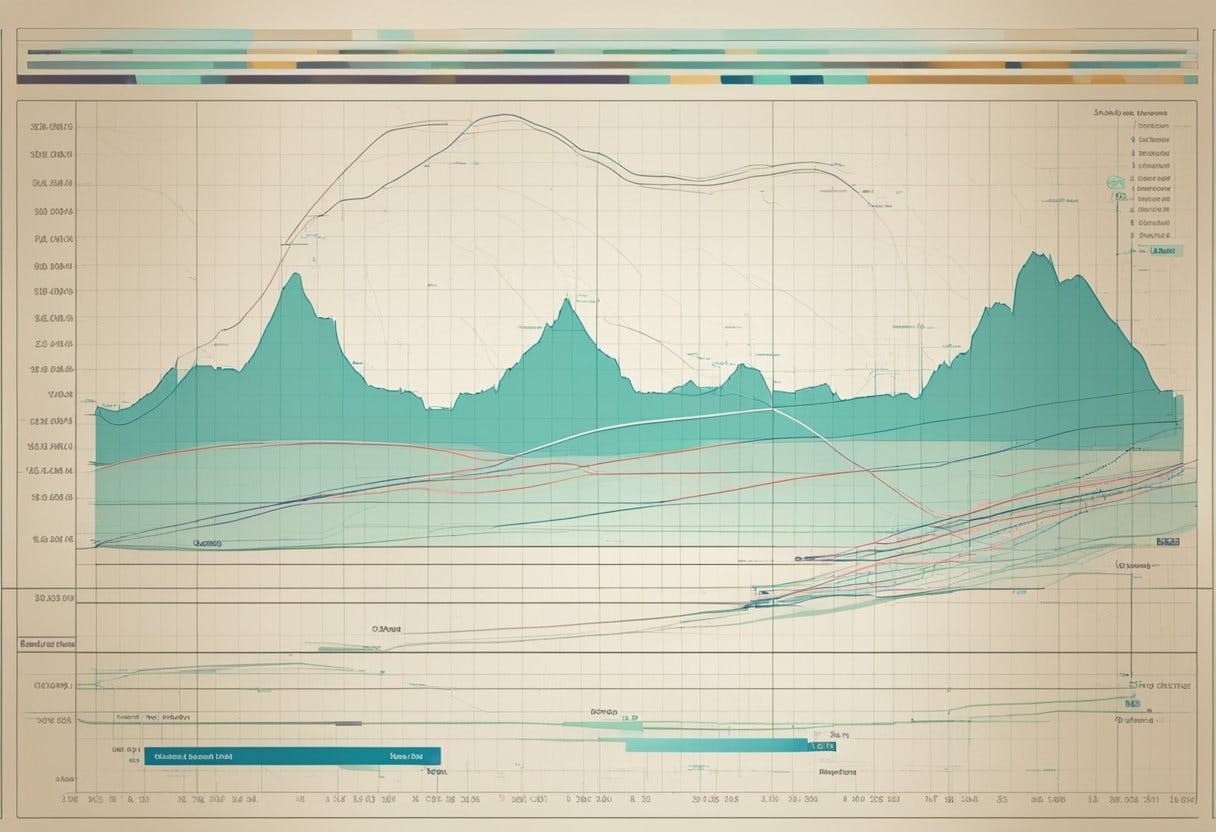
Forex trading is a popular way to invest and make money online. However, many traders often find themselves asking the question, “Why is my forex broker’s spread so high?” High spreads can be frustrating for traders, especially those who are just starting out. Understanding why spreads are high and how to trade effectively with them is crucial for any trader looking to succeed in the forex market.

Forex spreads refer to the difference between the bid and ask price of a currency pair. The spread is essentially the cost of trading, and it can vary depending on a number of factors. Understanding forex spreads is important because it can affect the profitability of a trade. High spreads can make it more difficult to make a profit, while low spreads can make it easier.
There are several factors that can influence the size of a forex spread. These include market volatility, liquidity, and broker-specific factors. By understanding these factors and implementing effective trading strategies, traders can learn to trade effectively with high spreads and achieve success in the forex market.
Key Takeaways
- Understanding forex spreads is crucial for any trader looking to succeed in the forex market.
- High spreads can make it more difficult to make a profit, while low spreads can make it easier.
- By understanding the factors that influence spread size and implementing effective trading strategies, traders can learn to trade effectively with high spreads and achieve success in the forex market.
Understanding Forex Spreads

Definition of Spread
In Forex trading, the spread refers to the difference between the bid and ask price of a currency pair. The bid price is the price at which a trader can sell a currency, while the ask price is the price at which a trader can buy a currency. The spread, therefore, represents the cost of trading a currency pair and is usually expressed in pips.
Components of the Spread
The spread consists of two main components: the bid-ask spread and the broker’s commission. The bid-ask spread is the difference between the bid and ask price and is determined by the market’s supply and demand for a particular currency pair. The broker’s commission, on the other hand, is a fee charged by the broker for facilitating the trade.
Types of Spreads
Forex brokers offer two main types of spreads: fixed and variable spreads. A fixed spread is a spread that remains constant regardless of market conditions, while a variable spread is a spread that changes in response to market conditions.
Fixed spreads are ideal for traders who prefer consistent trading costs and are willing to pay a slightly higher spread for this privilege. Variable spreads, on the other hand, are ideal for traders who want to take advantage of market volatility and are willing to accept the risk of wider spreads during periods of high market volatility.
It is important to note that the spread is not the only cost associated with Forex trading. Traders must also consider other costs such as overnight financing charges, margin requirements, and slippage when calculating the total cost of trading.
Factors Influencing Spread Size

When trading forex, one of the most important factors to consider is the spread size. The spread is the difference between the bid price and the ask price of a currency pair. A high spread can make trading more expensive and reduce potential profits. There are several factors that can influence the size of the spread, including market volatility, liquidity, and time of day.
Market Volatility
Market volatility is one of the most significant factors that can impact the size of the spread. High levels of volatility can cause exchange rates to fluctuate rapidly, which can lead to wider spreads. Natural disasters, economic events, and political instability can all contribute to market volatility and increase the spread. However, experienced traders can use volatility to their advantage by identifying opportunities to enter or exit trades at favorable prices.
Liquidity
Liquidity is another critical factor that can influence the spread size. In general, more liquid currency pairs tend to have lower spreads than less liquid pairs. This is because more liquid markets have a higher volume of buyers and sellers, which can help to narrow the spread. For example, the US dollar is one of the most widely traded currencies in the world, and currency pairs that include the US dollar tend to have lower spreads than other pairs.
Time of Day
The time of day can also affect the size of the spread. The forex market is open 24 hours a day, five days a week, and the spread can vary depending on the time of day. During peak trading hours, when there is more market activity, spreads tend to be lower. However, during off-peak hours, when there is less market activity, spreads can widen. It is essential to be aware of the trading hours for the currency pairs you are trading to ensure that you are trading during the most favorable conditions.
In summary, the size of the spread in forex trading can be influenced by a variety of factors, including market volatility, liquidity, and time of day. By understanding these factors, traders can make more informed trading decisions and trade more effectively with their broker’s spread.
Broker-Specific Factors
When it comes to the forex market, the spread is the difference between the bid and ask price of a currency pair. The spread is how forex brokers make their profit, and it can vary depending on a variety of factors. In this section, we’ll explore the broker-specific factors that can influence the spread.
Broker Business Models
Forex brokers can operate under different business models, which can affect the spread. One common business model is the market maker, where the broker takes the opposite side of the trade and acts as the counterparty to the trader. In this case, the broker can widen the spread to increase their profit margin. Another business model is the agency model, where the broker acts as an intermediary between the trader and liquidity providers. In this case, the broker may charge a commission fee instead of widening the spread.
Commission and Fees
Forex brokers can charge different types of fees, including commission fees and markup on the spread. Commission fees are a fixed amount charged per trade, while markup is a percentage added to the spread. Some brokers may offer lower spreads but charge a commission fee, while others may offer wider spreads but no commission fee. It’s important to consider both the spread and the fees when choosing a forex broker.
In conclusion, the spread can vary depending on the broker’s business model, commission fees, and markup. Traders should consider these factors when choosing a forex broker and decide which one best fits their trading style.
Strategies for Trading with High Spreads
Trading with high spreads can be challenging, but there are strategies that traders can use to minimize the impact of high spreads on their profitability. In this section, we will discuss some effective strategies for trading with high spreads.
Trade Selection
One of the most effective strategies for trading with high spreads is to select currency pairs that have lower spreads. Traders should focus on trading liquid currency pairs that have low spreads. For example, the EUR/USD currency pair is one of the most traded currency pairs in the forex market, and it typically has a low spread. By trading currency pairs with lower spreads, traders can minimize their trading costs and improve their profitability.
Timing Your Trades
Another effective strategy for trading with high spreads is to time your trades carefully. Traders should avoid trading during times of high volatility, as this can lead to wider spreads. Instead, traders should focus on trading during times of low volatility, when spreads are typically narrower. For example, traders may want to avoid trading during major news releases or other events that can cause large price movements.
Risk Management
Risk management is always important in forex trading, but it becomes even more critical when trading with high spreads. Traders should use stop-loss orders to limit their risk and protect their profits. By setting a stop-loss order, traders can automatically close out a trade if the market moves against them, which can help to minimize their losses. Additionally, traders should use proper position sizing to ensure that they are not risking too much on any one trade.
In summary, trading with high spreads can be challenging, but there are strategies that traders can use to minimize the impact of high spreads on their profitability. By selecting currency pairs with lower spreads, timing your trades carefully, and using proper risk management techniques, traders can trade effectively with high spreads.
Choosing the Right Forex Broker
When it comes to trading Forex, choosing the right broker is crucial. The broker you choose can affect your trading experience, including the cost of trading, the reliability of the platform, and the level of customer support you receive. Here are some factors to consider when choosing a Forex broker.
Comparing Broker Spreads
One of the most important factors to consider when choosing a Forex broker is the spread they offer. The spread is the difference between the bid and ask price of a currency pair, and it is the primary way brokers make money. Therefore, it is important to choose a broker with competitive spreads.
Traders should research the spreads offered by different brokers and compare them to find the most competitive rates. Keep in mind that some brokers may offer lower spreads but charge higher commissions or fees. Therefore, it is important to evaluate the total cost of trading with each broker.
Evaluating Broker Reliability
Another important factor to consider when choosing a Forex broker is their reliability. It is essential to choose a broker that is regulated and has a good reputation in the industry. Regulatory requirements vary by country, but reputable brokers should be licensed and regulated by a recognized regulatory body.
Traders should also research the broker’s trading platform to ensure it is reliable and user-friendly. A good trading platform should offer a range of tools and features to help traders analyze the markets and execute trades quickly and efficiently.
In addition, traders should evaluate the level of customer support offered by the broker. The broker should offer responsive and helpful customer support to assist traders with any issues or questions that may arise.
Overall, choosing the right Forex broker is an important decision that can affect your trading experience. By comparing broker spreads, evaluating broker reliability, and researching regulatory requirements, traders can find a broker that meets their trading needs and helps them trade effectively with a high spread.
Frequently Asked Questions
What causes forex spreads to widen unexpectedly?
Forex spreads can widen unexpectedly due to various factors such as market volatility, liquidity, and economic events. When there is high volatility in the market, spreads tend to widen as traders become more cautious and demand for liquidity increases. Similarly, during major economic events such as interest rate decisions or political announcements, spreads may also widen as traders adjust their positions. Additionally, low liquidity periods such as holidays or weekends can also cause spreads to widen unexpectedly.
How can I find a broker with consistently low spreads?
To find a broker with consistently low spreads, traders should research and compare the spreads offered by different brokers. It is important to note that the spread is not the only factor to consider when choosing a broker. Other factors such as regulation, trading platform, and customer support should also be taken into account. Traders can also look for brokers that offer fixed spreads, which remain constant regardless of market conditions.
What impact does major news have on forex spreads?
Major news events such as economic data releases or political announcements can have a significant impact on forex spreads. When there is a major news event, traders may become more cautious and demand for liquidity may increase, causing spreads to widen. Additionally, unexpected news events can cause sudden spikes in volatility, which can also lead to wider spreads.
At what times do forex spreads typically normalize after volatility?
Forex spreads typically normalize after volatility once market conditions stabilize. The time it takes for spreads to normalize can vary depending on the severity of the volatility and market conditions. During high volatility periods, such as major news events, spreads may take longer to normalize. However, during normal market conditions, spreads should normalize within a few minutes to a few hours.
What strategies can I employ to mitigate the effect of high spreads on my trading?
Traders can employ several strategies to mitigate the effect of high spreads on their trading. One strategy is to trade during low volatility periods when spreads are typically lower. Another strategy is to trade liquid currency pairs, which tend to have lower spreads. Traders can also use limit orders to enter and exit trades at specific prices, which can help to avoid wider spreads during volatile market conditions.
What are the characteristics of a favorable spread for successful forex trading?
A favorable spread for successful forex trading is one that is consistently low and does not widen unexpectedly. Traders should look for brokers that offer competitive spreads, particularly for the currency pairs they trade most frequently. Additionally, fixed spreads can be advantageous for traders who prefer stable trading costs. It is important to remember that the spread is only one factor to consider when trading forex, and traders should also take into account other factors such as market conditions and risk management strategies.
Read More




